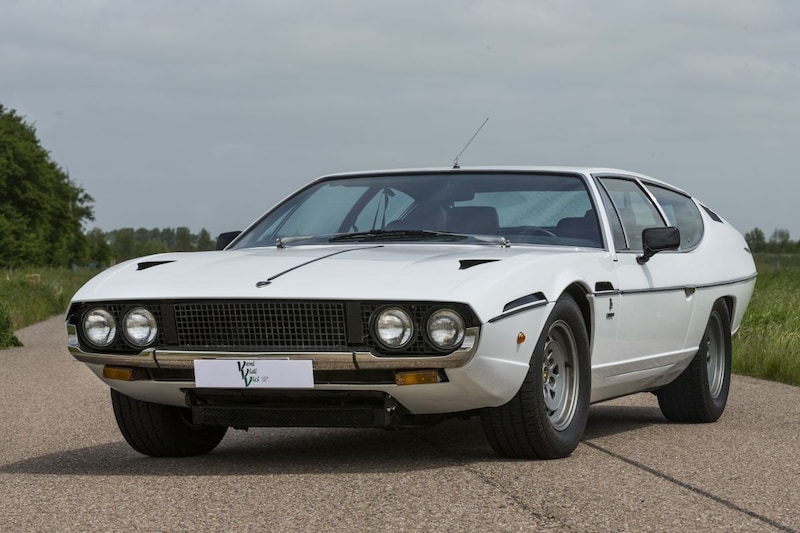
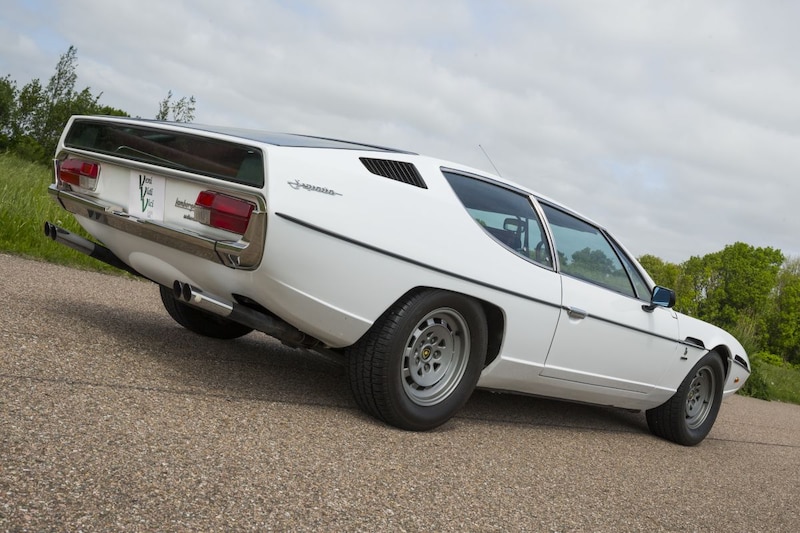


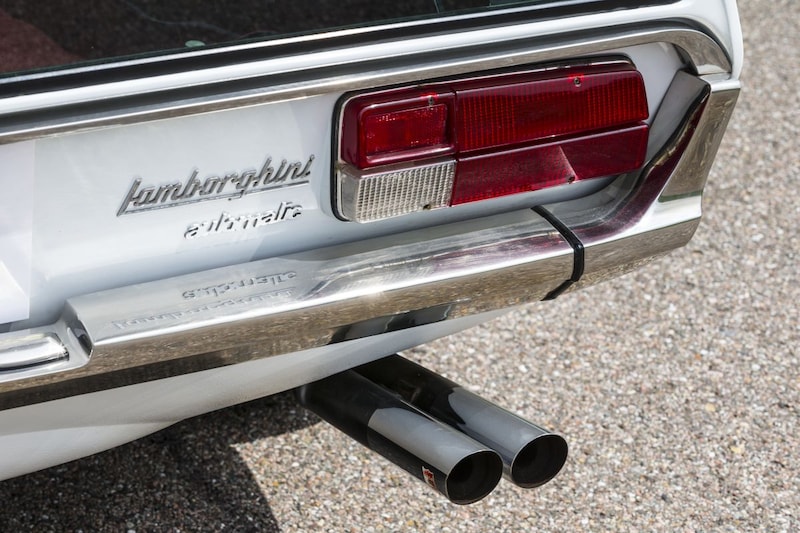
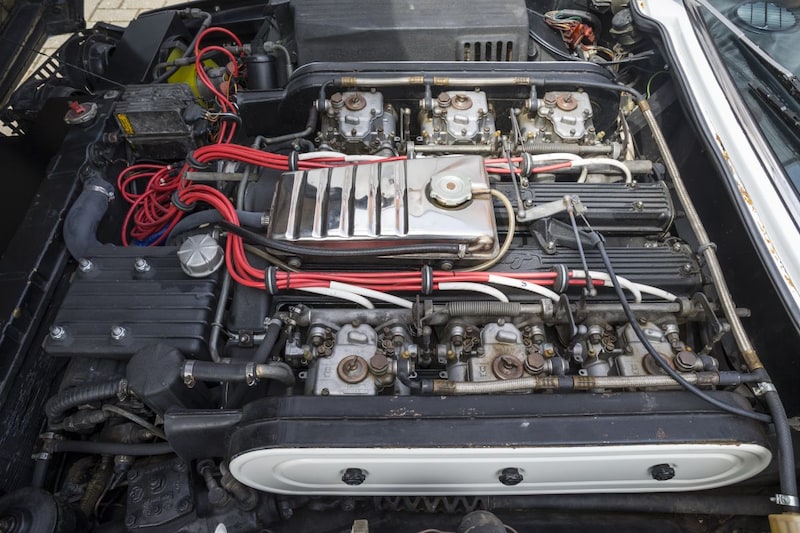
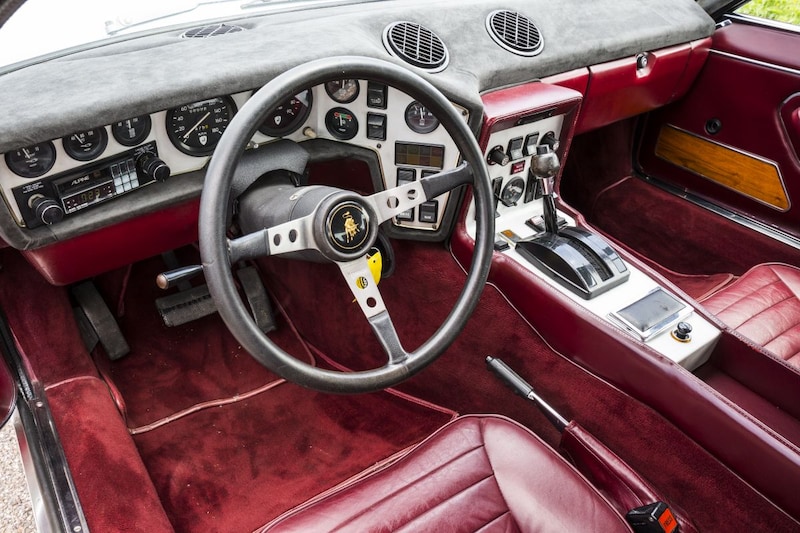
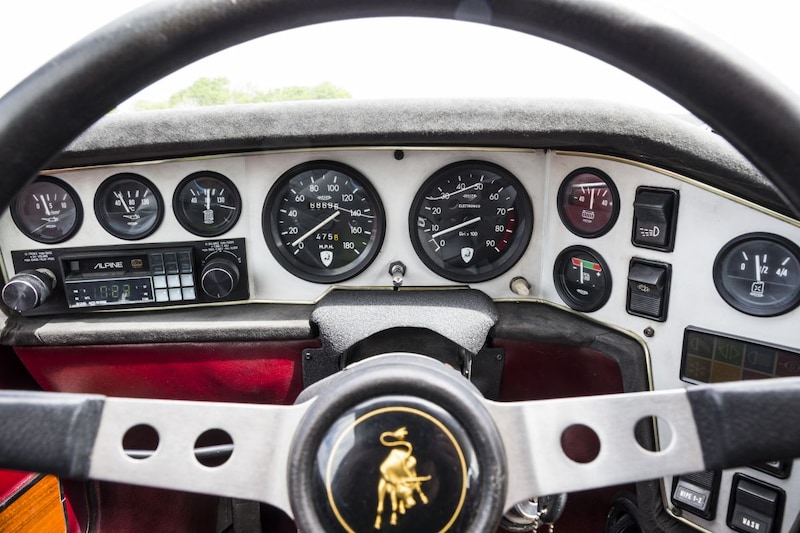
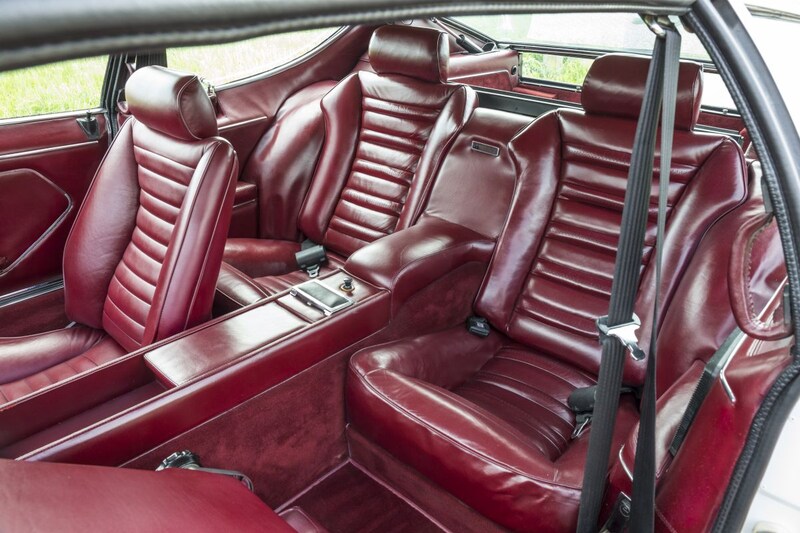
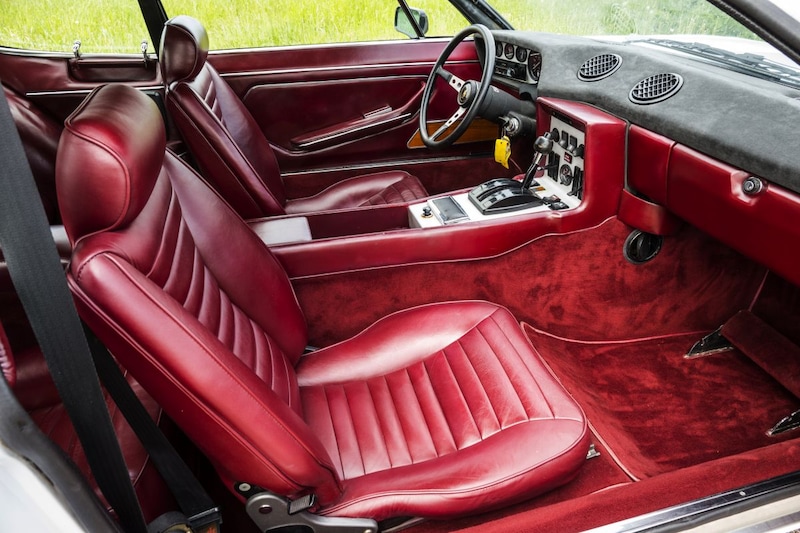



The Lamborghini Espada was not only stunning and lightning fast, but also comfortable. In addition, it could accommodate four people plus luggage. We test drive the third incarnation of the Espada, a white one with an automatic transmission.
Lamborghini’s list of eccentric, almost insane creations is quite impressive, with the Miura and Countach as highlights and the Jarama as a type to be quickly forgotten. The Espada fits perfectly in this parade of exotics. A four-seater GT with a twelve-cylinder engine. Not as eye-catching beauty as the first car that Lamborghini built and not nearly as sensational as the blood-curdling Miura, but a very special one. The Espada – Spanish for sword – is wide, low and long and therefore looks unwieldy. The design is by Gandini, a masterful designer who rather liked to walk off the beaten track. High-profile cars of this Italian master are the Citroën BX, the Lancia Stratos and also the first generation BMW 5 Series (the E12).
With the Lamborghini Marzal, a concept car, Gandini already laid the foundation for the Espada in the mid-1960s. There was to be a large GT, with room for four adults and their luggage. Maserati had the Quattroporte and Ferrari had the 365 GT 2 + 2. Anyone who has delved into the history of Ferruccio Lamborghini knows that this idiosyncratic Italian did everything he could to outperform the competition. He had to and would build the better car. In terms of design, performance and quality. And for its time, the Espada was a modern and progressive looking car, typical of Gandini’s creations. The Espada made its debut in 1968 at the Geneva Motor Show. It is a kind of successor to the 400 GT 2 + 2. The Series I was built from 1968 to 1970, the Series II until 1972, the third was produced until 1978.
Astronomical consumption
What makes the car we drive quite rare is the automatic transmission, which fits the character of a fast touring car. In every other Lamborghini you naturally want a manual gearbox, in this case the transmission from Borg Warner is in place, even though such an old automatic transmission takes out the lively character of a car. Only 55 Espadas were supplied with this gearbox, demand was low. Knowing that two new cylinder liners have been installed in the engine block, we are more careful than ever. After that intervention, the car has hardly been driven, so things still have to catch up a bit.
The twelve combustion chambers are fed by six massive Webers, and nearly eight times as much fuel per mile goes through his veins than a new Prius. Not to mention the fumes coming out of the four chrome flues. They probably still contain enough nutrients to run the engine of the same Prius. Incidentally, it must be quite an art to make those six gas factories exactly synchronized. If this is not the case, the engine will run badly because not all cylinders receive the same amount of fuel mixture. It feels like this is okay with this Espada, even though the technology takes a while to get up to temperature and you never reach the perfection of a modern injection engine, but it does not have the somewhat brutal and uncut character of this old one. V12.
Special sound
It may be a twelve-cylinder with 350 hp, this is not the kind of car in which you are shot, which is also partly due to the automatic transmission. Moreover, we do not dare to go all out, with a bike that has recently been taken apart. At medium load, it sounds a bit like a straight-six from an old BMW 530d, strange as that may seem. And it is quite special to realize that the concept of the car is already fifty years old. It was undoubtedly a sensation to drive at the time, now it is mainly a luxury GT. Fortunately, the steering is assisted, otherwise parking would be a disaster, with that enormous engine on the front axle.
The interior is just as amazing as the outside. An enormous amount of clocks, the radio on the left in the dashboard, part of the instrument panel is bent towards the driver and there is a lot of red leather. In the back there are two seats with a high tunnel in between with an ashtray and a lighter. The luggage compartment is not too large and is easily accessible through the opening rear window. Another special detail is the footstool on the passenger side and the large handles with which the rear side windows can be opened, we have never seen before. And if we take a look at the back, we not only see an extra window, but also rear lights that come from the Alfa Romeo 2000 Berlina, which are also the least extravagant parts of this car. It is not such a ferocious bull as the Miura, but the Espada is so extreme in everything that it exerts a great attraction.